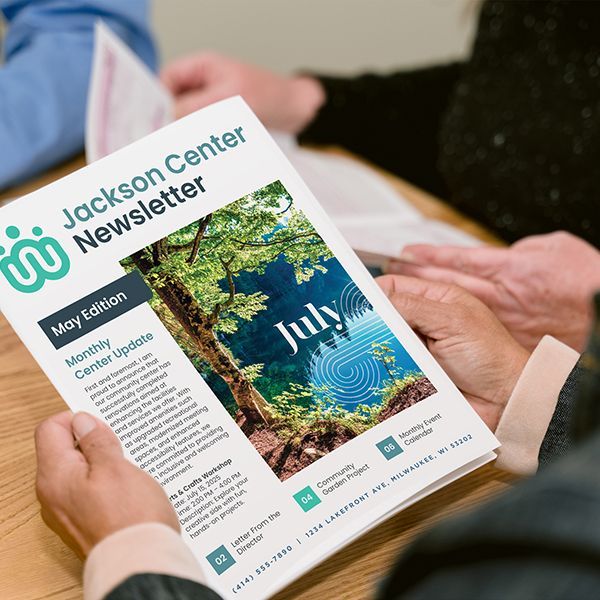What to Write in a “Letter from the Director”

When you are putting together a newsletter, either digital or print, for your community organization, making it inviting and appealing is important. One way to add a more personal touch is by incorporating a letter from the director. Hearing directly from leadership about what is happening at the organization and plans for the future can keep readers engaged.
If you haven’t written a Dear Friend style letter before, we have a few suggestions to help you get started.
From the Director: How to Write a Leadership Letter
- Be mindful of voice and tone: It’s important to adopt a voice and tone that matches the intent of your newsletter and your audience. For most community organizations, that means casual and friendly. A formal style is best used for more serious companies or topics that require gravity.
- Keep the letter clear and concise: Because of space constrictions, you’ll likely find yourself limited to a fairly stringent word count. Keeping it brief is also a good way to ensure your audience stays engaged. No one likes to read a long, rambling article or letter. A good approach is to write an initial draft and then edit it as many times as necessary, until your letter is clear and concise.
- Make it about the organization: We’ve probably all read long, boring leadership-style letters that seem more about the person than the organization. It’s an easy trap to fall into but will likely put readers off. As you write the letter, remember to focus on the organization, team members, and volunteers. Think of “we” instead of “me.”
- Inspire readers to connect: While it’s usually good to include at least a few words about what you’ve accomplished since your last communication and your plans for the next few months, stories are what really help people feel connected. Try to share an uplifting event or situation in your letter.
- Include a photo: Another way to help your target audience feel more engaged with your organization is to include a photo of yourself with the director letter. People like to be able to put a face with a name. It’s probably a good idea to have a professional photographer take a head shot — just make sure it’s not too formal.
- Add contact information: Don’t forget to incorporate your name, title, and contact information in your letter. Some find it helpful to set up a general email address for this purpose. That helps you avoid having the inbox of your primary email address overwhelmed with spam or sales pitches. Just make sure you or someone on your team regularly checks the email attached to the leadership letter.
One last suggestion: after you publish a few times, ask people for feedback. While criticism can be tough to hear, encouraging people to share ideas for improvement, as well as what they like, will help you write stronger director letters in the future.
If you are struggling to get a newsletter up and running for your organization, you might find our Print and Digital Newsletters services helpful! Contact us today to learn more about how easy it is to get a beautiful, free newsletter for your nonprofit started with LPi!
Updated on 03-25-2024




